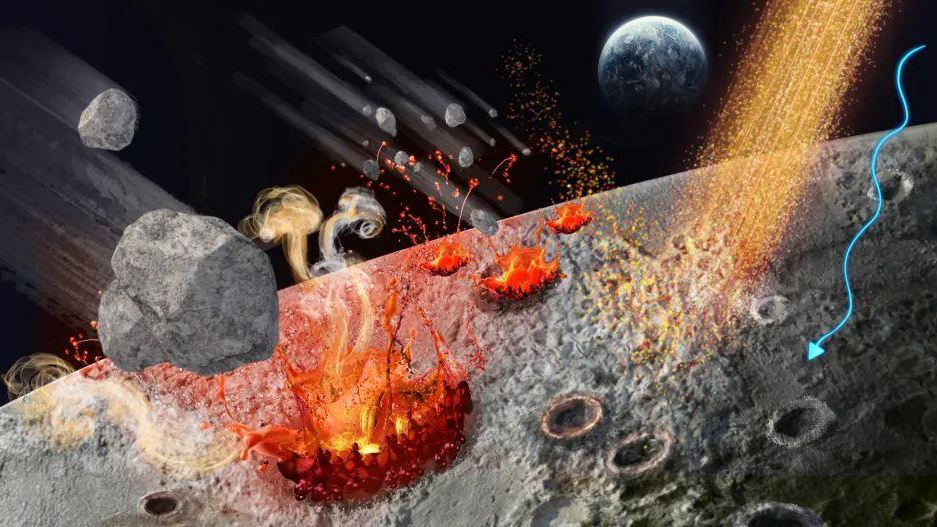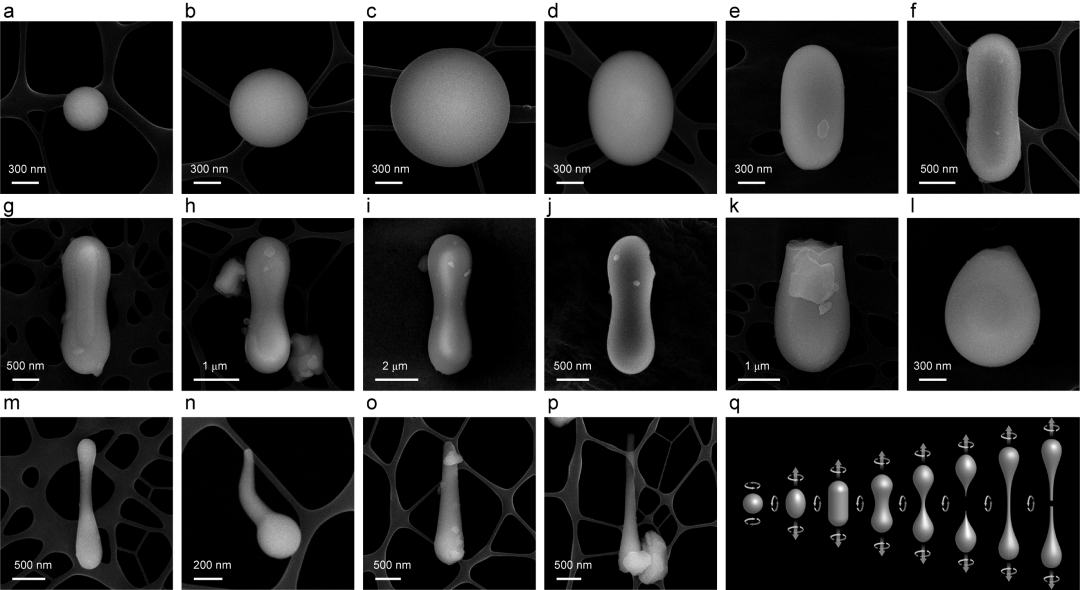
A schematic of space activities, such as meteorite impacts and solar wind irradiation on the lunar surface. /China Media Group
A schematic of space activities, such as meteorite impacts and solar wind irradiation on the lunar surface. /China Media Group
A new study by Chinese researchers demonstrating the feasibility of producing required materials in situ on the moon has provided important support for the construction of future lunar bases, according to the Institute of Physics (IOP) of the Chinese Academy of Sciences.
By conducting systematic research on the lunar soil samples returned by China's Chang'e-5 mission, the researchers have identified indigenous glass fibers for the first time in the lunar samples.
They found these ultra-elongated glass fibers were formed by thermoplastic formation of the viscous liquid during impact events.
Noting that attempts to use lunar simulant materials to fabricate artificial glass fibers in labs for future lunar base construction have been made, the researchers say their research removes the need for such materials.
"Our findings directly demonstrate that glass fibers can be produced in-situ on the moon, which could inspire space fabrication of glass fibers, such as homogeneous optical fibers and strengthening structural fibers required by future lunar bases," said the researchers in their study "Diverse glasses revealed from Chang'e-5 lunar regolith" published in the scientific journal National Science Review in March.
The study provides a scientific basis for the in-situ processing of glass materials and devices based on lunar soil resources, said the IOP.
Besides glass fibers, they also discovered diverse lunar glasses with different textures, categories and origins.

Electron microscope images of various glass particles identified from China's Chang'e-5 lunar samples. /China Media Group
Electron microscope images of various glass particles identified from China's Chang'e-5 lunar samples. /China Media Group
On the barren lunar surface are abundant lunar glasses produced by various non-equilibrium processes, including volcanic eruptions, geological movements and meteorite impacts, which can remain stable for billions of years.
These lunar glasses, therefore, play an important role in lunar exploration by recording "crucial information of their formation processes over geological timescales," said the researchers.
They classified the glasses into five types based on their origins: "volcanic glasses, impact glasses, adhered glasses, deposited and irradiated amorphous rims," recording corresponding lunar activities.
"The abundant micro impact products, like micron to nano-scale glass droplets or craters, highlight that the regolith is heavily reworked by frequent micrometeorite bombardment," said the researchers.
The study revealed the space environment characteristics and its effects on the sampled lunar regolith, which lays a foundation for understanding the composition of the lunar materials and the spatiotemporal evolution of the lunar regolith, said the IOP.